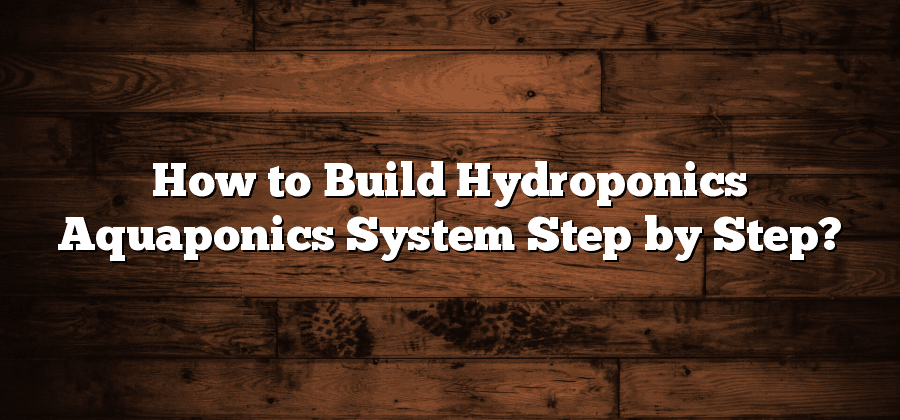Understanding the Basics of Hydroponics and Aquaponics
Hydroponics and aquaponics are two innovative methods of farming that have gained popularity in recent years. Both systems involve growing plants without the use of soil, relying instead on water and nutrients to support plant growth.
In hydroponics, plants are grown in a nutrient-rich solution that is constantly circulated around the roots. This allows the plants to take up the necessary nutrients in a highly efficient manner. Aquaponics, on the other hand, combines hydroponics with aquaculture, creating a symbiotic relationship between fish and plants. The waste generated by the fish provides nutrients for the plants, while the plants filter the water, keeping it clean for the fish.
Both hydroponics and aquaponics offer numerous advantages over traditional soil-based farming. These systems provide a controlled environment for plant growth, allowing for optimal nutrient uptake and growth rates. They also use water more efficiently, as the water is recirculated rather than being lost to evaporation or run-off. Additionally, hydroponics and aquaponics can be implemented in a variety of settings, including indoor spaces, urban areas, and even on rooftops.
Understanding the basics of hydroponics and aquaponics is the first step towards successfully implementing these farming methods. By harnessing the power of water and nutrients, these systems can revolutionize the way we grow our food, making it more sustainable and environmentally friendly.
Selecting the Right Location for Your System
Selecting the right location for your hydroponics or aquaponics system is crucial for the success and efficiency of your setup. The ideal location is one that provides optimal conditions for plant growth and is convenient for maintenance.
Firstly, consider the availability of natural light. Plants in hydroponics and aquaponics systems rely heavily on artificial lighting, but natural sunlight can greatly benefit their growth. Ensure that your system is positioned in an area that receives ample sunlight throughout the day. This will not only reduce the energy consumption required for artificial lighting but also promote stronger and healthier plants.
Secondly, assess the accessibility of the location. Since maintaining these systems requires regular monitoring and adjustment, it is important to choose a location that is easy to reach. Consider factors such as proximity to a water source, power outlets, and storage space for your tools and supplies. Having everything conveniently located will facilitate the efficiency of your system and make maintenance a more manageable task.
By carefully selecting the right location for your hydroponics or aquaponics system, you are setting the foundation for a successful and sustainable setup. Remember to prioritize natural sunlight and accessibility in order to maximize plant growth and simplify maintenance.
Gathering the Necessary Materials and Equipment
To start your hydroponics or aquaponics system, it’s essential to gather all the necessary materials and equipment. These are the building blocks that will ensure the success of your system. The first item on your list should be a high-quality grow tray to hold your plants. Look for a tray that is durable, easy to clean, and has proper drainage capabilities. Additionally, you will need grow lights to provide the necessary light spectrum for plant growth. LED lights are highly recommended as they are energy-efficient and can be adjusted for different stages of plant growth. Other equipment to consider includes pH and nutrient testing kits, a water pump, air stones, and an oxygenator to maintain oxygen levels in the water. By investing in the right materials and equipment from the beginning, you are setting yourself up for a successful hydroponics or aquaponics system.
Building the Framework for Your Hydroponics Aquaponics System
Once you have selected the perfect location for your hydroponics aquaponics system, it is time to start building the framework. The framework is an essential component as it provides the structure and support for the entire system. When constructing the framework, it is important to ensure that it is sturdy and durable enough to withstand the weight of the plants, water, and equipment.
Start by measuring and marking the dimensions of your system on the ground or floor where it will be installed. Next, gather the necessary materials such as PVC pipes, connectors, and brackets. PVC pipes are commonly used for constructing the framework due to their versatility, affordability, and resistance to water damage. Begin assembling the framework by connecting the pipes and securing them with the appropriate connectors and brackets. Make sure to check for any potential weak points or areas that may require additional bracing for added stability. Once the framework is built, you can proceed with the installation of the water circulation system, which is crucial for maintaining the health and growth of your plants.
Installing the Water Circulation System
Once you have built the framework for your hydroponics aquaponics system, it is crucial to install an efficient water circulation system. The water circulation system is responsible for maintaining the flow of water throughout the system, ensuring that nutrients are evenly distributed to the plants and the fish have access to clean water.
To begin, you will need to connect the water pump to the water reservoir. It is important to choose a pump that is suitable for the size of your system and has the appropriate flow rate. Once the pump is securely in place, attach the necessary tubing to create a continuous loop. This tubing will carry water from the reservoir to the plants, and then back to the reservoir. Additionally, it is crucial to install a filtration system to remove any debris or waste from the water, keeping it clean and preventing clogging of the system. By properly installing a water circulation system, you will ensure a consistent and efficient supply of water and nutrients, leading to healthier plants and thriving fish in your hydroponics aquaponics system.






